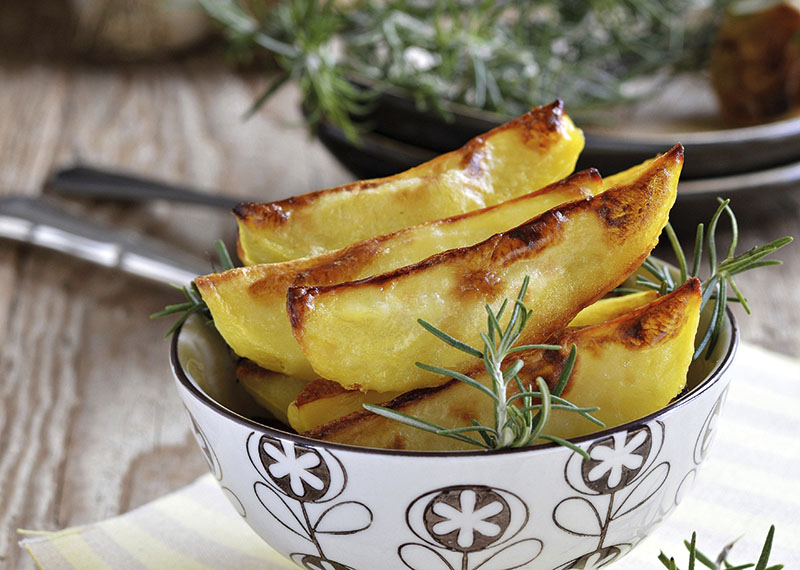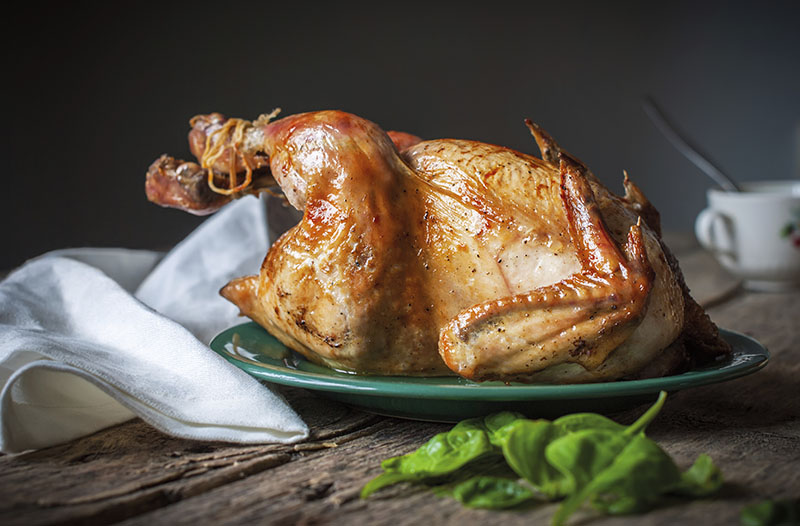Delegation. Delegation. Delegation. There is no more suitable meal at which the principles of a working professional kitchen should be applied in the home than Christmas dinner. There is enough to do on Christmas Day without one poor soul getting bogged down in the seemingly epic task of preparing, cooking and serving the Roast of the Year. And that’s before we even begin to think about the clearing up.
Even for a full-time chef, the prospect of cooking the most important meal of the season for family and friends can be a little daunting: the weight of expectation alone can be intimidating enough before the potato peeler has even left the drawer. The answer to this annual conundrum is to break down the meal into small, manageable tasks and assign these to a number of different people over the course of the few days and hours before everybody sits down, in the same way a working kitchen does. Over the course of a week, I put together four different menus (a lunch menu, a tasting menu, an à la carte menu and a Sunday lunch menu), each of which changes three or four times over the same period of time.
‘Break down the meal into small, manageable tasks and assign these to a number of different people’
Purees, sauces and braises are made in advance in batches to last four or five days. Vegetables are blanched and shocked in iced water to last a couple of days. Potatoes are turned into chips, mash and rösti 50 portions at a time, twice a week. Partridges and ducks arrive with similar regularity and are all prepped in one fell swoop. And the meat for Sunday’s award-winning roast lunch comes in on Friday to be prepped over two days, in time to hit the oven at about eight o’clock on Sunday morning.
While the scale is different, the home cook (especially one for whom the prospect of cooking Christmas dinner is terrifying enough to ruin the festive season altogether) can learn from these systems and principles and take solace from the fact that even in a restaurant kitchen, very little is done at the last minute: rather it is a case of reheating, finishing, keeping things warm or finding ways to make the chaos of a busy service a little easier.
If you’ve ever wondered why terrines are a popular menu item, now you have your answer: they are easy to prepare in large quantities and even easier to serve, especially when the chef has to think about cooking a panful of scallops, searing a fillet steak, finishing a sauce, cooking a pan of vegetables for a garnish and adding just enough stock to a risotto before enriching it with butter and Parmesan (but off the heat so it doesn’t split or overcook). And then getting it all onto plates and into the dining room to the right people at the correct table, at the same time as concentrating on the next eight peoples’ main courses and the starters for table five.
All this seems a far cry from turkey, devils on horseback, cranberry sauce and sprouts, but the overriding message is clear: make your life as easy as possible and spread the work over an extended period of time, rather than trying to keep 15 different balls in the air at once. Not only will the stress levels be considerably lower, but the results will be far better. So, in the spirit of sharing and giving, here are my top five tips for cooking the best Christmas dinner. Ever.

Top Tips
1. GIVE UP ON TURKEY – or at least give up on cooking a whole turkey. You may lose the majesty and ceremony of the carve, but the results are far superior. Instead, break down the turkey into legs and breasts and brine them all in a 7.5-8{b486c5a37ab2d325d17e17d701cb2567b1ecd1814e8ceb33effa2a4f1f171d46} salt solution for 18-24 hours, before rinsing in fresh cold water for a couple of minutes and drying. The legs can be slow cooked, even braised, in advance (which in turn will give you a terrific stock for making gravy along with the bones and giblets), and the meat picked off them ready to be quickly reheated, whereas the breasts will take no more than an hour to cook, freeing up the oven for more important items like potatoes and vegetables.
2. PREPARE THE VEGETABLES IN ADVANCE Sprouts can be peeled, blanched in boiling, salted water and shocked in ice water a couple of days prior to the 25th. Carrots can be brought to the boil and also shocked in cold water, leaving you with little more to do than put them in the oven at the same time as the roasties.
3. PREPARE THE POTATOES A COUPLE OF DAYS BEFOREHAND Peel and parboil the roast potatoes on the 23rd or 24th and leave them to steam dry, before covering with cling film and leaving in the fridge. All that remains is to roast them in goose fat for 45 minutes.
4. COLD STARTERS SERVED FAMILY STYLE ARE A LIFESAVER Smoked salmon, prawn cocktail, cured meats, oysters and pâtés all fit the bill and ease the pressure on the cook.
5. DELEGATE We finish where we began – assign tasks, especially simple, menial ones like peeling vegetables, to others, leaving you to do little more than adorn your head with a paper hat and bring the whole lot together with quiet, confident and deft aplomb.

